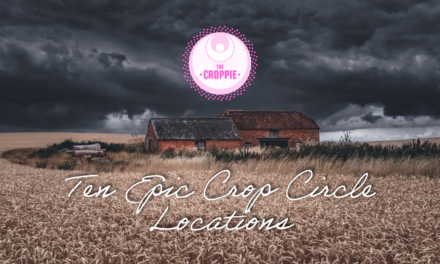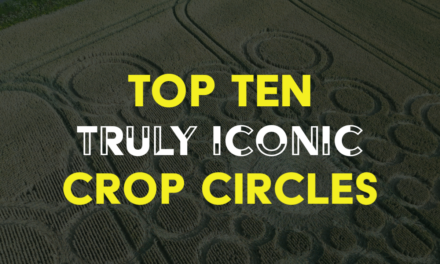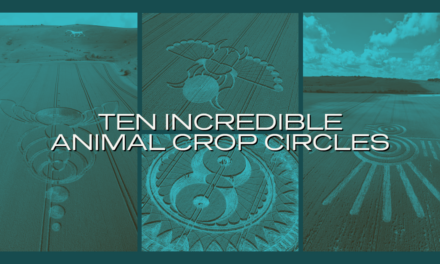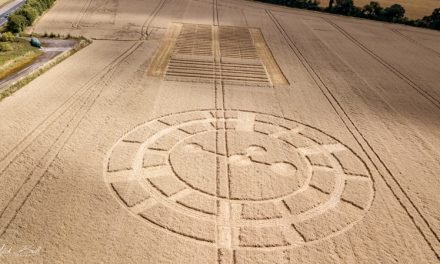
Steve Alexander’s Fifteen Best Photographs

All photographs on this page by Steve Alexander / Temporary Temples
Crop circle photographers come and go, but Steve Alexander has been on the scene since 1994 and remains one of the very best. The Croppie recently spent a few hours digging back through Steve’s archives at Temporary Temples and it remains an excellent resource for anyone with an interest in the circles. It made sense to drop a list of what The Croppie feels are Steve’s fifteen very best crop circle photos.
15 to 11

15. Winterbourne Bassett, 1994
Taken with a pole mounted camera (remember those?) this wonderful photograph really captures the rapid lifecycle of a crop circle formed in young barley. Look closely and you can see areas where the crop is attempting to right itself back up. Also note the wind blowing the standing crop in the foreground.
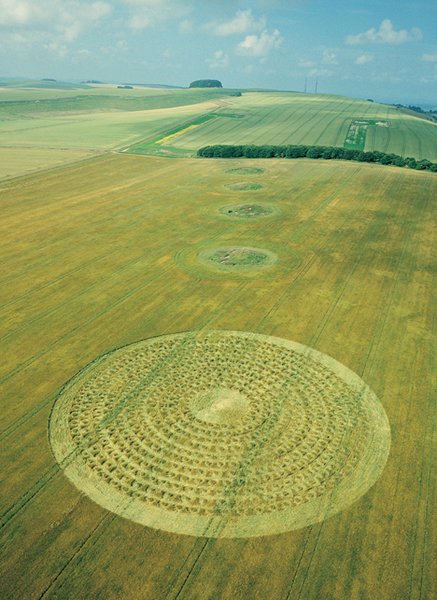
14. North Down, 2003
A wonderfully simple and effective crop circle is just one feature in this tall image that’s all about alignment.
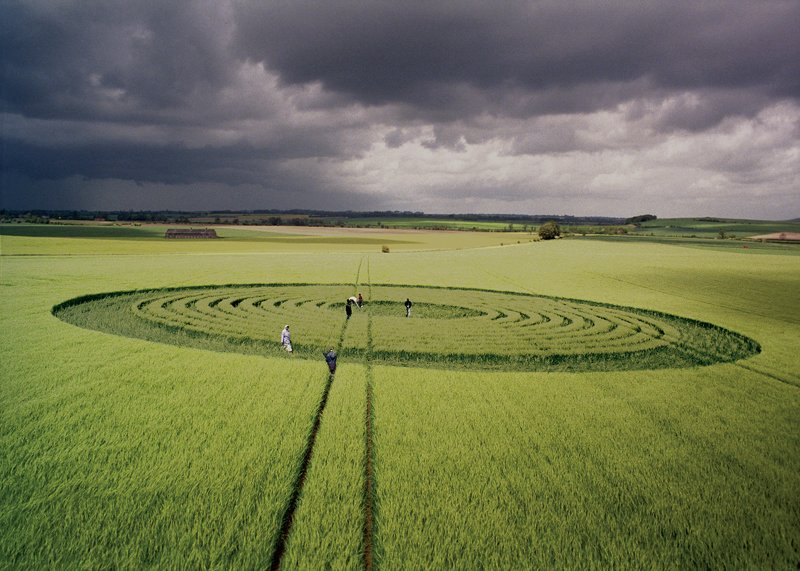
13. Beckhampton, 1995
The open landscape around Avebury can make any crop circle photograph look special yet the beauty here stems from simplicity. A single pair of tramlines, concentric circles and wide spaces in the distance all combine under a dark, menacing sky.
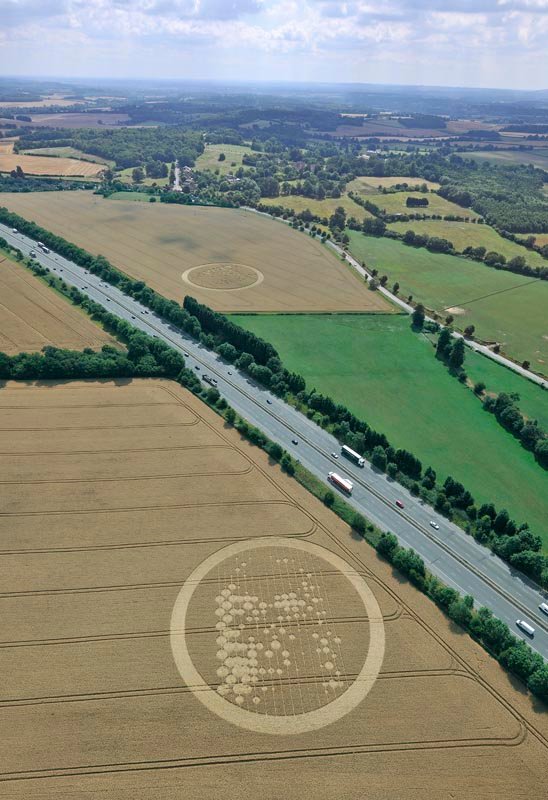
12. Wickham Green, 2010
These two crop circles, when overlaid, merge to create a representation of Jesus. They lie in a straight alignment with the little village of Wickham Green in the background. This photograph perfectly captures circles and scenery with the M4 motorway running through the middle.

11. Wilsford, 1994
Captured from the ground on 35mm film, this grainy image shows the scale of this ‘thought bubble’ formation in the Vale of Pewsey.
10 to 6

10. Stonehenge, 1996
Everybody knows Stonehenge but it’s dwarfed in size by the iconic Julia Set. This particular image highlights the size discrepancy better than any other photo.
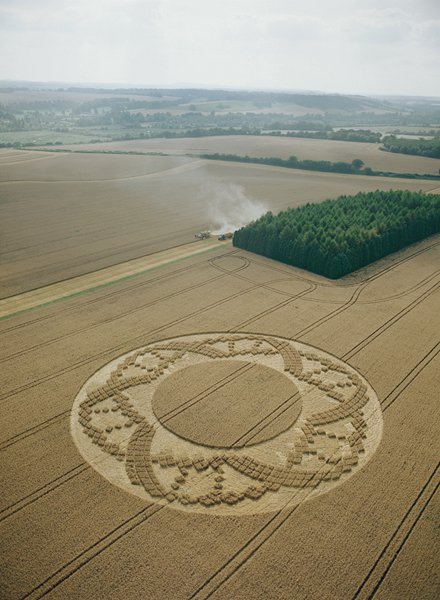
9. Crooked Soley, 2002
Steve Alexander was the only photographer to get to the legendary ‘DNA helix’ at Crooked Soley before the combines (in the background) ended its brief existence.
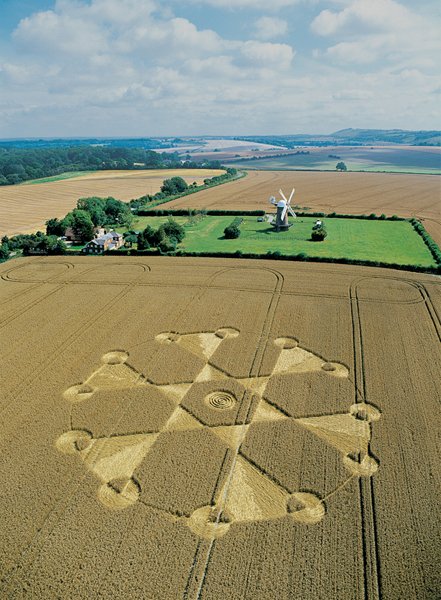
8. Wilton Windmill, 2004
A personal favourite, this is such a cute photograph. Pretty windmill, pretty landscape, pretty sky and pretty crop circle.

7. Oliver’s Castle, 1994
The strength of Alexander’s photography is the effortless manner in which he records the beauty of the circles and the landscape they grace. This is another example taken from the hillside at Oliver’s Castle.
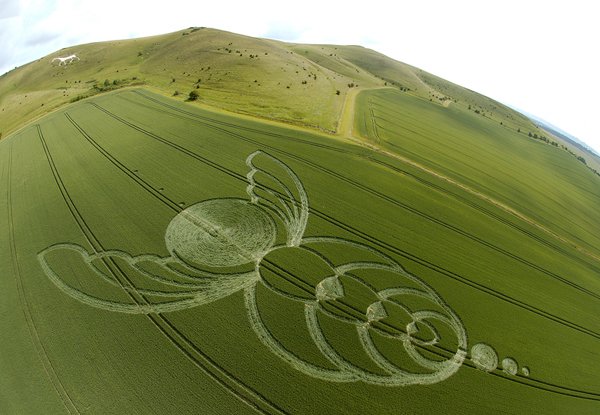
6. Alton Barnes White Horse, 2004
A sweeping ultra-wide shot of the infinitely likeable bee formation from 2004, complete with the white horse and Milk Hill in the background.
5 to 1
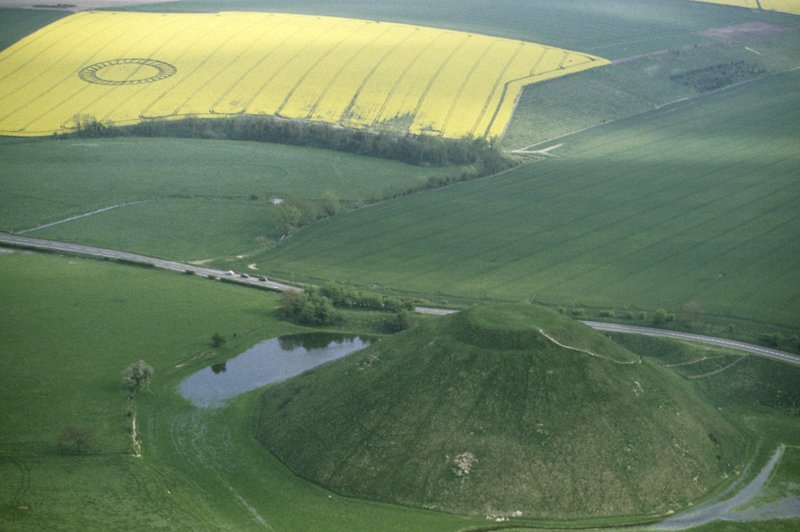
5. West Kennett Longbarrow, 1998
The highest placed 35mm photograph in this collection showing the classic ‘Beltane wheel’ formation on the hillside close to West Kenett Longbarrow. Ancient Silbury Hill is in the foreground. Keen eyed readers will note the drying moat around Silbury Hill, a rare sight in crop circle photographs shot in the vicinity.

4. Silbury Hill, 2009
There is everything to love about this image. The rolling downs around Avebury speak for themselves and this wonderful, if flawed, crop circle sits in a straight alignment with Silbury Hill.

3. South Field, Alton Barnes, 2002
A photograph that slips under the radar when it comes to Steve Alexander’s portfolio, highlighting a minimally beautiful crop circle aligned with a distant circle in East Field and Knap Hill on the escarpment. The tramlines in both fields really stand out and highlight the enormity of East Field.
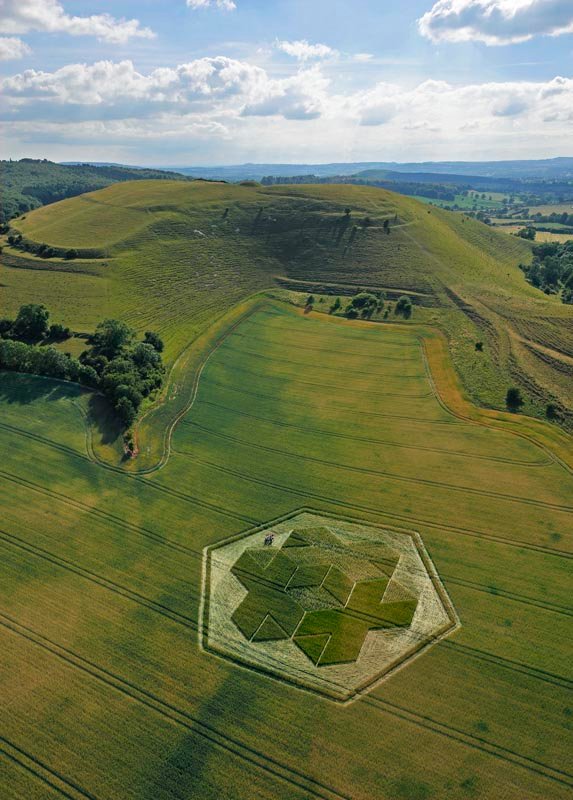
2. Cley Hill, Warminster, 2010
Great light, a fascinating crop circle, steep gradient and wonderful scenery make this a fantastic capture. Look in the top left of the circle and you’ll see a small group of visitors.

1. Milk Hill, 2001
When The Croppie thinks of Steve Alexander’s best photograph this capture of 2001’s Milk Hill ‘galaxy’ always comes to mind. The circle is legendary and the scenery — speckled by cloud shadow — is glorious. This photograph deservedly made it onto the front cover of Steve’s book Crop Circles: Signs, Wonders and Mysteries. It doesn’t get better than this.


